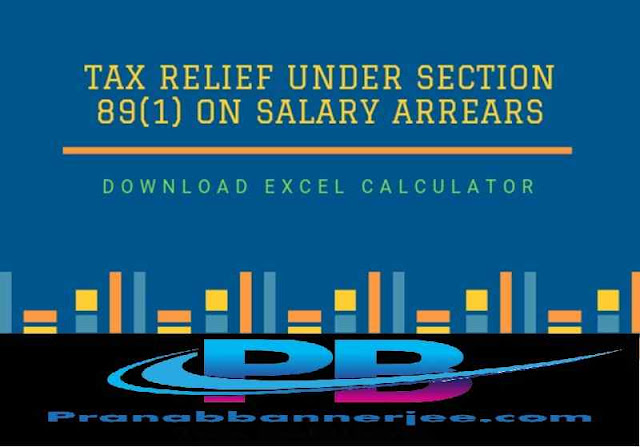- Home
- All in One F.Y.2022-23
- _All in one for W.B.Govt Employees
- __All in one for Govt & Private Employees
- __All in One for the Non-Govt Employees
- __DropDown 3
- _ShortCodes
- _SiteMap
- _Error Page
- Form 16 Part B for F.Y.2022-23
- _50 Employees Form 16 Part B
- _100 Employees Form 16 Part B
- Form 16 Part B One by One
- Form 16 Part B One by one
Automatic Income Tax Salary Arrears Relief Calculator in Excel for the F.Y.2021-22.
Apnataxplan
January 03, 2022
Automatic Income Tax Salary Arrears Relief Calculator in Excel for the F.Y.2021-22.By what means can income tax relief be obtained from any arrears of salary from the previous year? Provided that the tax consequences of the equivalent can be asserted. Would it be a good idea for me to pay taxes on the total tax base? Shouldn't something be said about last year's tax allowance, etc.? Taxpayers who have such demands in mind, here's all there is to know.
At the moment, you must have recently learned that income tax is determined on the total income of the taxpayer for a specific year. The income can be in the form of salary or family annuity or various sources of income. Despite this, there may be situations where you have received arrears of family benefits or salary coming up during the current financial year. It may happen that a taxpayer receives upfront a share of his preferred position or salary or any amount of money in arrears in the year in question, which increases his total income in the same way as the taxes he owes. In this case, an application can be made and the supervisory authority can grant relief to the taxpayer. In essence, the Income Tax Law ensures that the irregularity rates of income tax have value, and as such, when the indication of income does not belong to the current year, a relief is granted with the aim that the taxable income does not increase.
To ensure that you do not interfere in meeting the additional taxes, the Income Tax Office grants relief U/s 89 (1). If you receive an annuity or dues for the previous year, you will not be taxed on the total amount for the current year. It basically takes you away from paying additional fees by thinking about the path in which the segment was delayed.
You must submit Form 10E to obtain benefit under section 89 (1). What is Form 10E The most obvious request would be. The subtleties of Form 10E, how and why to submit the equivalent are detailed below.
What is the relief under Article 89 (1)?
Exactly when the taxpayer receives:
1. wage arrears Or
2. Salary advance Or
3. Arrears of the family pension
Until that time, this amount is taxable in the monetary year in which it is received.
In any case, relief under Article 89 (1) is granted to mitigate the additional tax nuisance due to the deferral in receiving such income.
How to get exemption under section 89 (1)?
Here is the best way to obtain relief under Section 89 (1) of the Income Tax Act, 1961:
1. Calculate the tax payable on arrears by reviewing the total income for the year in which it is received.
2. Calculation of the tax due on total income, excluding arrears, for the year in which it is received.
3. Calculate the separation of a space in the interval of (1) and (2).
4. Taxes payable on the total taxable income for the year to which arrears are linked, including arrears.
5. Calculate the separation within the limits of (4) and (5) in any place.
6. The amount of the deductible is (3) plus the multiple of (6). If the amount of (6) exceeds the amount of (6) in (3), no relief will be granted.
What is the 10E Form?
To ensure relief under Section 89 (1) for salary arrears received, Form 10E should be registered with the Income Tax Department. In the event that Form 10E is not filed and relief is guaranteed, the taxpayer is about to receive a warning from the Income Tax Office for not documenting Form 10E.
Download Automated Income Tax Arrears Relief Calculator U/s 89(1) along with Form 10E from the Financial Year 2000-01 to Financial Year 2021-22 (Up-to-date Version)
Popular Posts
Total Pageviews
Footer Menu Widget
Created By - | - apnataxplan Templates






0 Comments